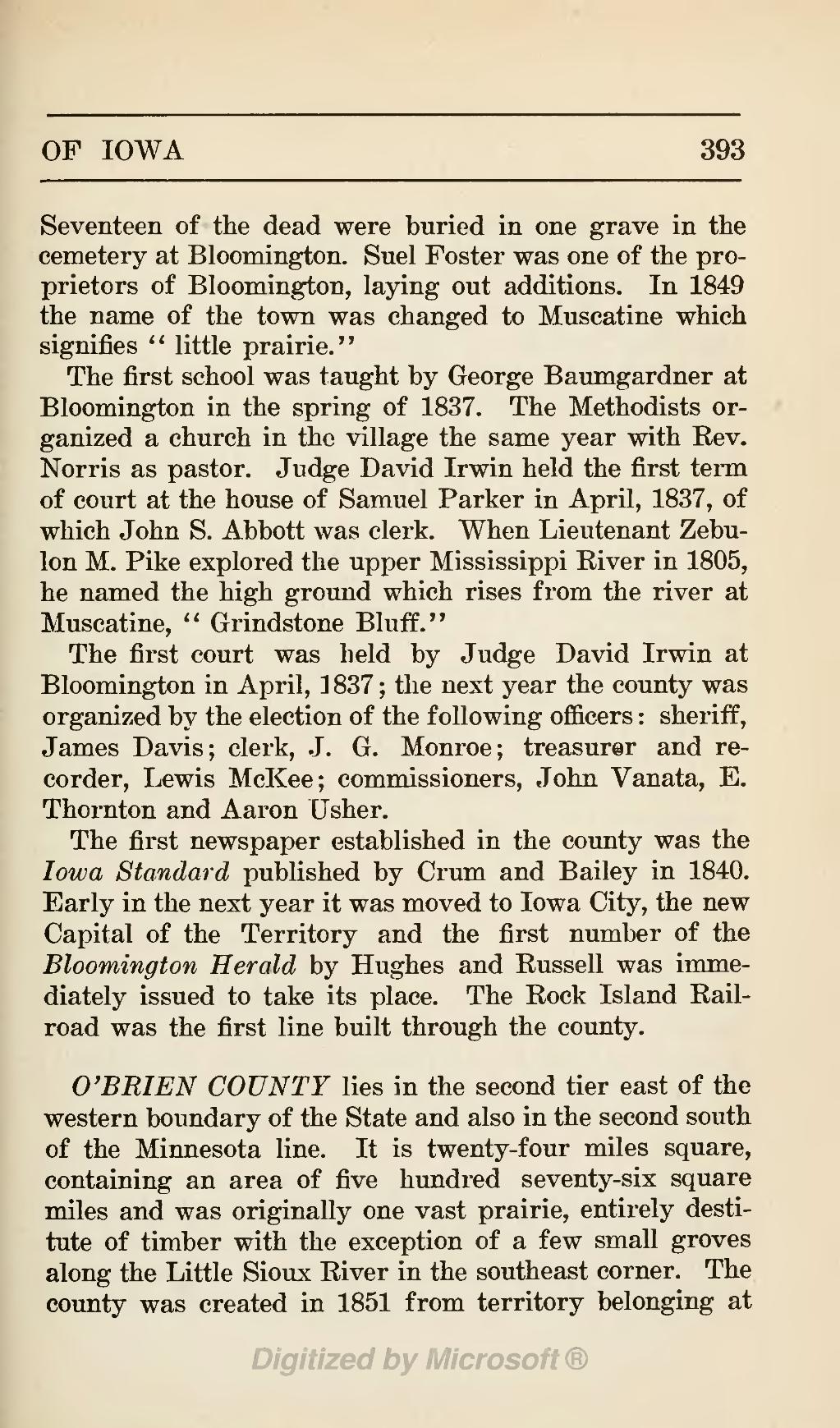Seventeen of the dead were buried in one grave in the cemetery at Bloomington. Suel Foster was one of the proprietors of Bloomington, laying out additions. In 1849 the name of the town was changed to Muscatine which signifies “little prairie.”
The first school was taught by George Baumgardner at Bloomington in the spring of 1837. The Methodists organized a church in the village the same year with Rev. Norris as pastor. Judge David Irwin held the first term of court at the house of Samuel Parker in April, 1837, of which John S. Abbott was clerk. When Lieutenant Zebulon M. Pike explored the upper Mississippi River in 1805, he named the high ground which rises from the river at Muscatine, “Grindstone Bluff.”
The first court was held by Judge David Irwin at Bloomington in April, 1837; the next year the county was organized by the election of the following officers: sheriff, James Davis; clerk, J. G. Monroe; treasurer and recorder, Lewis McKee; commissioners, John Vanata, E. Thornton and Aaron Usher.
The first newspaper established in the county was the Iowa Standard published by Crum and Bailey in 1840. Early in the next year it was moved to Iowa City, the new Capital of the Territory and the first number of the Bloomington Herald by Hughes and Russell was immediately issued to take its place. The Rock Island Railroad was the first line built through the county.
O’BRIEN COUNTY lies in the second tier east of the western boundary of the State and also in the second south of the Minnesota line. It is twenty-four miles square, containing an area of five hundred seventy-six square miles and was originally one vast prairie, entirely destitute of timber with the exception of a few small groves along the Little Sioux River in the southeast corner. The county was created in 1851 from territory belonging at
